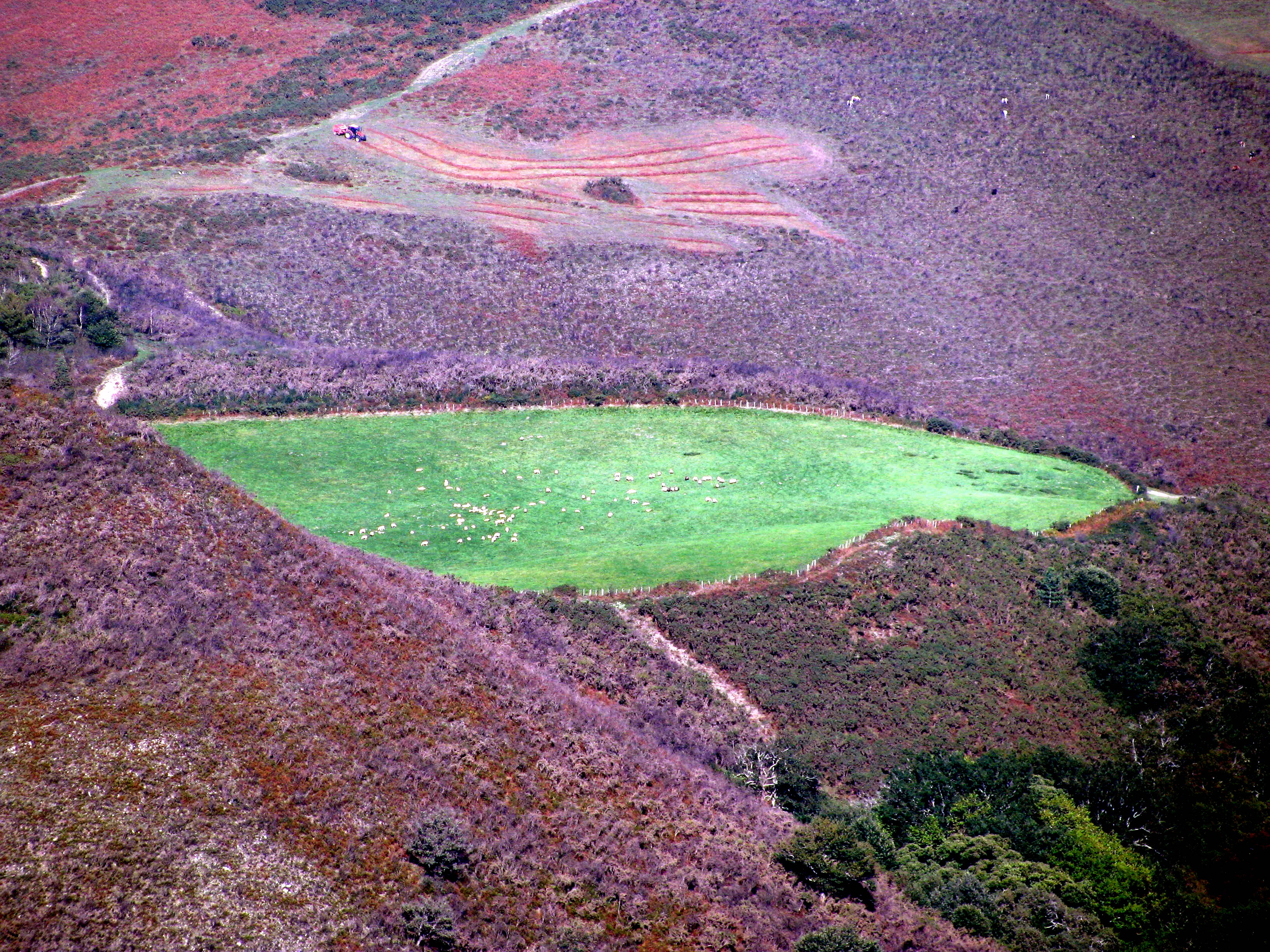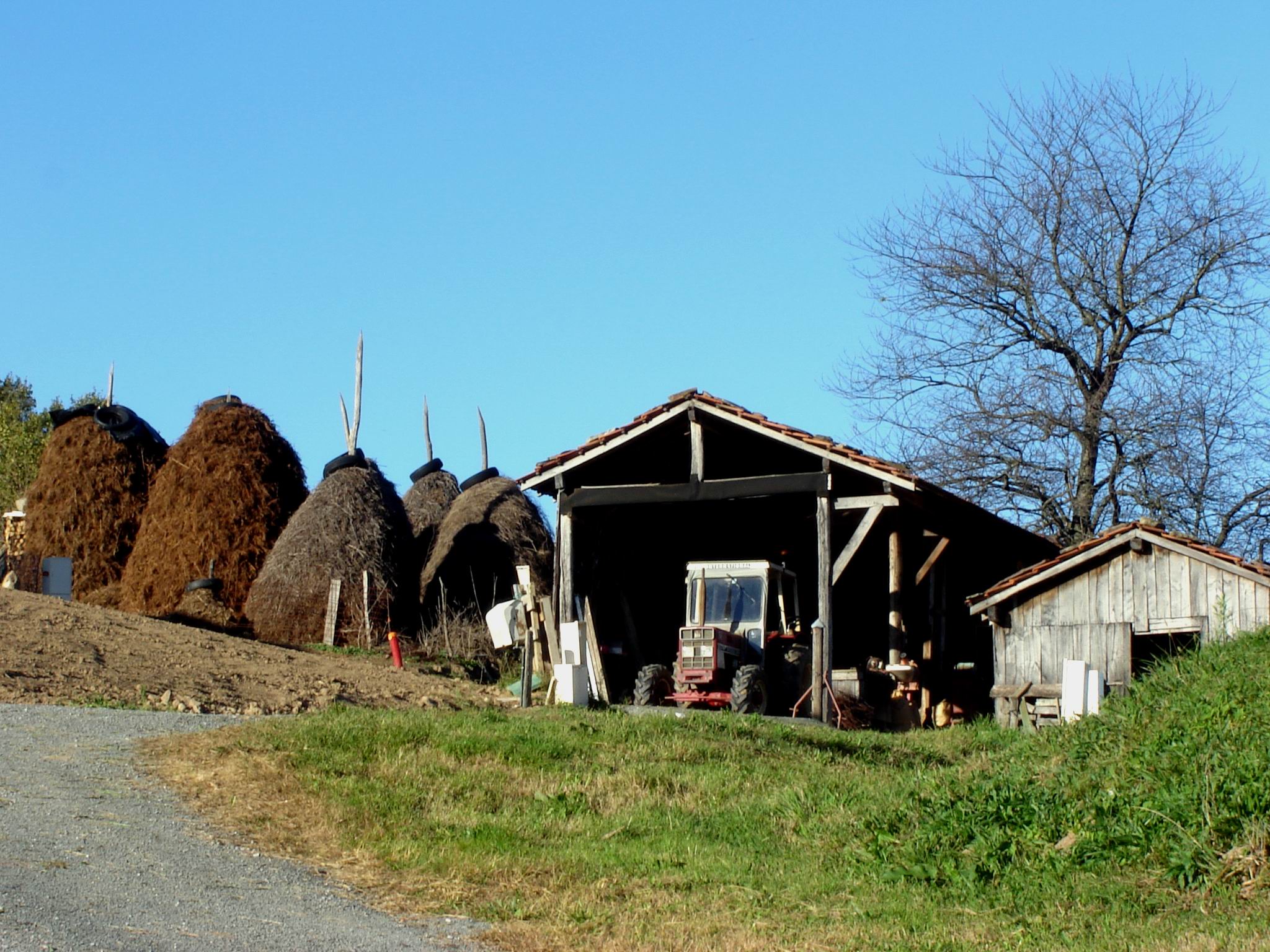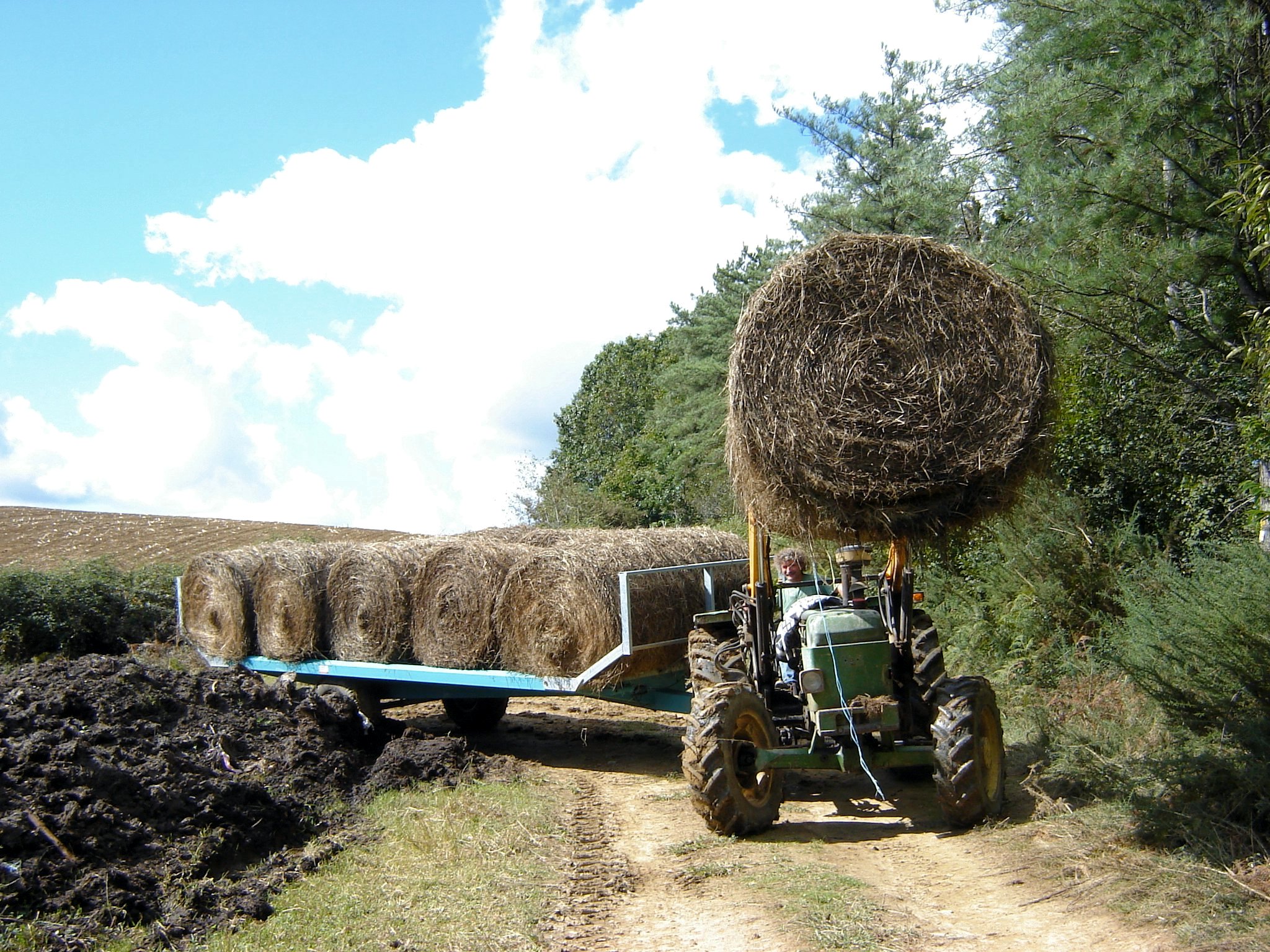Basque ethnography at a glance

Mechanized harvesting of ferneries. Urruña (Lapurdi), 2009. Michel Duvert.
Moorland (larrea) is the natural setting for the commons (herriko lurrak), historically open-access territory, where enclosures (borda-barrukiak) were built for livestock and clearings (labakiak or luberriak) opened and regularly burned (lur-erretzea) for maintenance.
Moors are the result of a prolonged destruction of primary forests by animal grazing and fire, and thus a creation of humans. Solely from the perspective of the flora, several types of moorland can be distinguished, dominated in the main by various species of heather, ferns, or prickly gorse and its varieties. Continuous grazing extends now across woods —as is the case with the region of Sara—, where pottokas and sheep graze freely. Close to meadows and moors, cereal crops were once grown, both for human and animal consumption (wheat, chiefly oats…).

Stacks of fern and hay. Sara (Lapurdi), 2006. Michel Duvert.
The stripping of moorland, as well as forestland, was an effective and vital agricultural resource. Mulch and vegetation (samatsa) were scraped away and used as animal bedding, and mixed with manure from the pen proved to be a valuable fertilizer (ungaria) for thriving maize plants. Since the 16th and 17th centuries livestock shelters associated to the houses (etxeak) were built in the mountain. Every farmhouse (etxaldea) had its patch of ferns, which they cut and piled in stacks (iratze-metak) or sledged down. Farmers knew how to turn the upper layer of vegetable matter into fine, rich compost that could be readily absorbed. Sheep droppings (arkina) were collected and used, preferably in the garden.
Moorland is profoundly marked by the history of the commons. In the 17th century provincial intendants declared ownership of communal lands was vested in the king. Nothing could be further from the truth, for the Basque people have always been the true masters of their land and free to use and benefit from it. In an attempt to resist the harassment of the administration, the people of Lapurdi bought back their land on 16 August 1641, which cost them 8400 of the former pounds.
Communities distributed the territory among the families by their standing. So each farmstead had its own fernery (iraztokia) to harvest ferns from, and young thuja, which was mixed with tender gorse to make feed (jokia) for the larger animals. The remaining lands, mostly moors and woods (without exception), were held by communities in reserve.

Transport of bales. Senpere (Lapurdi), 2006. Michel Duvert.
With the intensification of productivity, monocultures have dramatically expanded: pastures and maize fields make up the current landscape. Grasslands occupy great part of the slopes to the detriment of moors and also forests. Livestock holdings are getting bigger, farming for meat and milk has become more intensive and the average farmhouse exploits up to 40 hectares. Mountain farming is totally different now and the transformation undergone by the moors gives account of it.
Michel Duvert – Etniker Iparralde – Etniker Euskalerria Groups
Translated by Jaione Bilbao – Ethnography Department – Labayru Fundazioa

